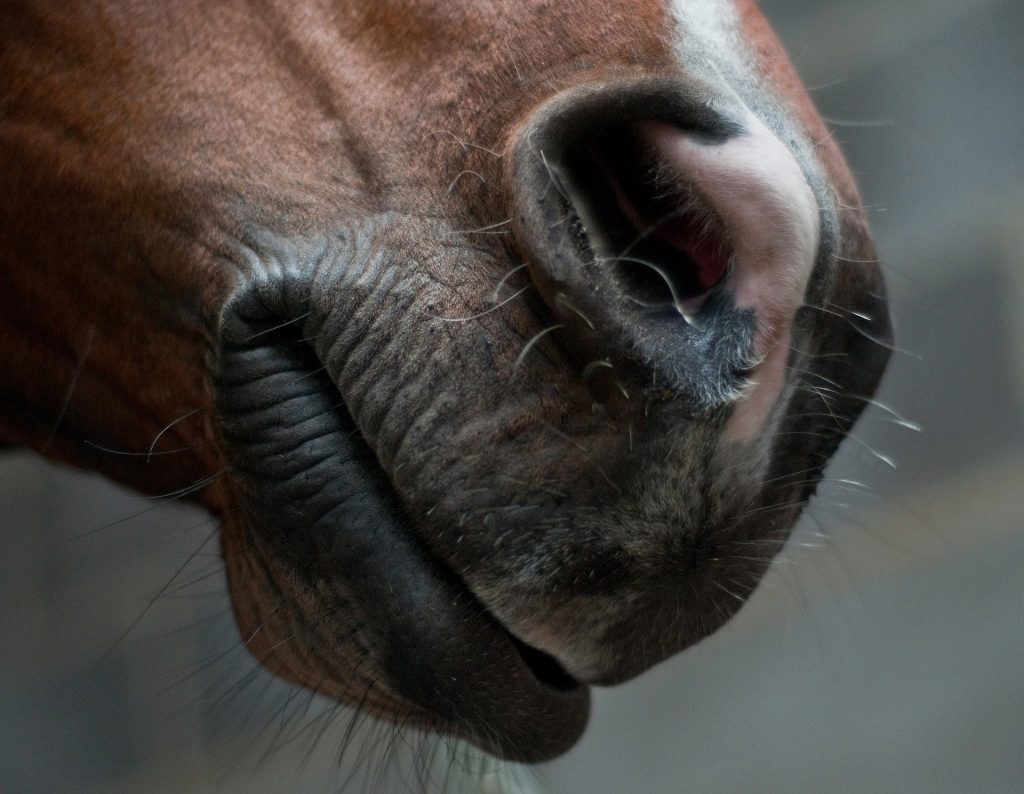The Scientific Program Committee of the 2024 International Equine Infectious Disease Conference invites authors to submit abstracts for inclusion in the Conference. Data which reports recent research relating to any aspect of equine infectious disease will be considered. Following peer review, authors of accepted abstracts (oral and poster) will be invited to present their data at the conference. All abstracts (oral and poster) that are presented at the Conference will also be published within an online supplement of the Equine Veterinary Journal. Further details of requirements for oral and poster presentations will be provided in due course to those authors whose abstracts are selected for presentation at the Conference.
Please note that all delegates will be required to fund their own registration expenses.

Oral or poster presentation
- Abstracts for oral presentations will be included in the main program.
- Oral presentations are limited to 12 minutes.
- Poster presentations will be available in PDF format.
- Further details of the requirements for oral and poster presentations will be provided in due course to those authors whose abstracts are selected for presentation at the Conference.
Abstract elegibility
- Recent research relating to any aspect of equine infectious disease will be considered. Examples may include epidemiology, bacteriology, immunology, parasitology and virology and be of relevance to the following systems and topics; gastrointestinal, reproduction, biosecurity, surveillance, neurological, respiratory, diagnostics, working equids, other system diseases, emerging and re-emerging diseases. All submissions will be considered.
- Work which has either been published, submitted or accepted for publication within the 12 month period before the start of the Conference (30th September 2023) is acceptable. Prior publication of abstracts in Proceedings from other meetings, including those distributed online is permissible. Data published more than 12 months before the start of the Conference will be considered on an individual basis by the editors.
- Authors who submit novel data which is likely to be submitted for publication elsewhere, should ensure their IEIDXII abstract complies with the Instructions to Authors of their intended journal and does not compromise their ability to publish in the future.
- The submission of an abstract implies the author’s willingness to present their data at the Conference.
Abstract and content format
The abstract must be
- Written in English. Authors are directed to the Equine Veterinary Journal’s Author Guidelines for details of use of language, abbreviations, symbols and nomenclature, drug names and manufacturers’ details. These are available via https://beva.onlinelibrary.wiley.com/hub/journal/20423306/homepage/forauthors.html
- A maximum length of 300 words. This includes references but excludes the title, authors, institution details and declarations. All declarations should be made in the relevant sections of the Wiley website (see below).
- Single line spacing.
- Times New Roman 10 point font.
- References can be included but they should be limited to those that are essential. If included, use bracketed numbers [1], [1-3], etc to cite references in the order that they appear throughout the body of the abstract.
The abstract must not contain
- a new line for each section
- indented paragraphs
- tables, graphs or figures
The abstract should have the following headings
- Background: The background behind the decision to choose this subject to study.
- Objectives: The statement that is being tested, and is testable by the methods (below); or the original aims and study deliverables.
- Study Design: Concise statement of the study design.
- Methods: Brief description of materials and methods and methods of testing hypotheses.
- Results: Brief highlights of the results obtained. Please note that when commenting on p values, please include mean+SD or median and Inter Quartile Range for each group or express the mean difference with 95% confidence intervals. 95% confidence intervals must also be included for odds ratios.
- Main Limitations: Concise statement of limitations and source of bias.
- Conclusions: Conclusions drawn from results.
A short title of 5 words or less should also be provided on submission. This will be used for the Conference scientific program where space is limited
Ethical Guidelines and Declarations
- All this information should be placed within a Declarations section at the end of each abstract. Do not include declarations in the main body of your abstract or word count.
- The following clear and transparent declarations must be included in all abstracts:
- Ethical Guidelines for Animal Research. All submissions must adhere to the Ethical Guidelines outlined in Equine Veterinary Journal’s Author Guidelines available at https://mc.manuscriptcentral.com/evj-abstracts (Instructions & Forms tab on the top menu bar). These must detail the ethical framework, oversight or approval process relating to the study. For retrospective analysis of clinical records, including laboratory data, it is permissible to state: “Research ethics committee oversight not required: retrospective analysis of clinical data”.
- Owner informed consent (IOC). This must detail how IOC was obtained. IOC should normally be stated for all studies involving material sourced from animals, whether invasive or non-invasive. Failure to include appropriate information on owner consent will lead to abstract rejection. For retrospective analysis of clinical records, including laboratory data, it is permissible to state “Explicit owner informed consent for inclusion of animals in this study was not stated”.
- For example, IOC is required:
- When using tissues derived from client-owned animals obtained at post-mortem examination or as excess during clinical sampling.
- When undertaking prospective research on clinical cases.
- For example, IOC is not required for studies involving:
- Data in the public domain (e.g. race or competition records).
- On micro-organisms collected from client-owned animals.
- Key Manufacturers. Where abstracts describe a study relating directly to any specific commercially available product (for example a vaccine or anthelmintic trial, diagnostic test or treatment device etc), the manufacturer’s name and a link to their website must be included. It is not necessary to include manufacturers’ details for common products used in the methods e.g. biochemicals.
- Compliance with Equine Veterinary Journal’s Antimicrobial Stewardship Policy.
- Competing interests of all authors.
- Source(s) of Funding.
If appropriate, state “not applicable” against the relevant heading.
The following are unacceptable as abstracts
- Any study using clinical cases that lack confirmed, definitive diagnoses.
- Descriptions of data as “pending”.
- Vague statements such as “the results will be discussed”.
- Abstracts which fail to meet the eligibility criteria.
- Insufficient data. You must put actual data in the abstract: do not submit the abstract expecting to get the data by the time you present it at the meeting.
- Multiple abstracts on related topics. Abstracts that present data “fractionated” into 2 or more abstracts when they could be combined into one are discouraged (e.g. regarding test validation, methodology development, or establishing a normal range without application to a population with sufficient power to demonstrate statistical significance).
submission dates
Abstracts can be submitted from 17th March 2024 until 5th May 2024 inclusive. Submissions after this date will be rejected automatically
submission process
- Abstract submission will go live on 17th March 2024. To submit your abstract go to the IEIDXII website https://eidc2024.com/ then click on the Abstract Submission link which will take you to the Equine Veterinary Journal abstract site: http://mc.manuscriptcentral.com/evj-abstracts
- To facilitate blinded peer review, please submit 2 copies:
- Blinded copy for peer review: Remove author names and addresses and delete all identifying details and where appropriate, replace these with the words “details masked for peer review” in the main body of the abstract;
- Un-blinded copy for production: This must include the authors’ names and addresses after the abstract title and the Ethical declarations described above at the end of the abstract. Underline the name of the person who will present at the Conference.
- The electronic submission site will also enable authors to select either an oral presentation only or poster presentation only or both formats, to be decided by the Scientific Program Committee and Guest Editor.
Peer review
- Submitted abstracts will be peer-reviewed in a blinded process, abbreviated from that used by the Equine Veterinary Journal for full manuscripts.
- After an initial editorial screening phase, abstracts will be reviewed by 2 individuals with expertise in the relevant topic. Both scientific quality and relevance to current equine infectious disease research and practice will be considered.
- Excessively poor grammar, lack of clarity of writing and failure to make complete and appropriate declarations will be grounds for abstract rejection.
- There will be no opportunity for revision of the abstract.
Authors will be notified of the outcome of their abstract submission and a brief report provided, which will make recommendations to improve presentations.
Abstract decision process
The Guest Editor will coordinate review of all abstracts by the Scientific Program Committee’s Section Editors and their delegated reviewers. Abstracts will be scored on relevance to equine infectious disease, scientific merit, quality and implementation, together with the completeness and correct formatting of the submission. Following peer review, a decision will be made whether the abstract is acceptable and satisfies all declaration requirements. The oral or poster presentation format will also be decided. Authors will be informed whether their abstract has been accepted and in which format in mid-end of June 2024. The Scientific Program Committee and Guest Editor’s decisions are final.
Notification of acceptance will be sent to authors by mid-end of June 2024.
Future publication of material in your abstract
- Equine Veterinary Journal encourages submission of full papers describing work that has already been submitted or presented as an abstract at this IEIDXII conference. Publication of a 300 word abstract in this (or any other conference proceedings) will not prevent you submitting the same work as a full manuscript to Equine Veterinary Journal (see EVJ author guidelines). EVJ permits prior publications of abstracts of up to 1,000 words, providing the abstract did not contain figures or tables .
- To encourage submission of full papers to EVJ, manuscripts arising from abstracts which have been submitted to EIDICXII are eligible for free publication worth £89. To qualify, manuscripts should be submitted to EVJ at least one week after the IEIDCXII abstract submission closing date. The offer will remain open for one year.
- If you are considering future publication in other journals, authors are encouraged to check the guidelines with editors of specific journals and to be aware that some journals limit the length of previously published abstracts to 250 words (notably J Am Vet Med Assoc and Am J Vet Res have these limits).

Questions?
For queries relating to Conference registration or arrangements for your presentation, please go to the Contacts tab on the IEIDCXII website (https://ieidc.org/).
For queries relating to submission of a full manuscript to Equine Veterinary Journal via Manuscript Central, please email Jane Gamble jane@evj.co.uk